Description
Dahlia Unwins new
Dahlia Unwins new The classic to raise from seed producing bushy free flowering plants reaching 60cm(24in) tall with single to semi-double 3in flowers produced across a wide range of colours. Will flower late into autumn until the first frost. A half-hardy annual that will form tubers and re-grow the following year in milder areas.
Cultivation Advice
- Choose a sunny area with well-draining soil. Dahlias thrive in full sun, receiving at least 6-8 hours of sunlight daily.
- Plant tubers after the last frost date when the soil has warmed up. In cooler climates, start tubers indoors a few weeks before the last frost to get a head start.
- Ensure the soil is loose, fertile, and well-draining. Incorporate organic matter like compost to improve soil structure and fertility.
- Plant tubers about 2-4 inches deep, with the eye (or sprout) facing upward. Space tubers approximately 8-12 inches apart.
- Keep the soil consistently moist but not waterlogged. Water deeply once or twice a week, especially during dry spells or when tubers are actively growing.
- Apply mulch around the plants to retain moisture and suppress weed growth. Keep the area around the tubers weed-free to reduce competition for nutrients.
- Some dwarf varieties might not need support, but if they become top-heavy, gently stake them to prevent bending or breaking.
- Fertilize lightly with a balanced fertilizer or a fertilizer higher in phosphorus (middle number) to promote flower production. Apply according to package instructions.
- Regularly remove spent blooms to encourage continuous flowering. Pinch or cut the faded flowers back to the nearest set of leaves.
- Dig up tubers after the first frost, allow them to dry for a few days, and store them in a cool, dry place for the winter. Replant in the spring.
- Monitor for pests such as aphids or spider mites. Treat any issues promptly. Dahlias can be prone to powdery mildew; good air circulation helps prevent it.
- Routinely inspect plants for signs of stress, disease, or pests. Early detection allows for prompt intervention and minimizes potential damage.
- Use a soaker hose or water at the base of the plants to keep foliage dry and prevent fungal diseases. Water early in the day to allow excess moisture to evaporate.
- Encourage compact, bushy growth by pinching back young plants when they are about 6 inches tall. Pinch off the tip of the main stem to encourage branching.
- Provide shelter or cover during intense heatwaves or heavy rains to protect the plants from stress or damage.
- Wait until the soil has warmed up adequately before planting tubers. Cold, wet soil can lead to tuber rot.
- If some stems are weak or prone to bending, provide gentle support using small stakes or plant rings to prevent damage.
- Implement IPM practices such as introducing beneficial insects or using natural remedies like neem oil to control pests while minimizing the use of chemical pesticides.
- Pair dahlias with companion plants like marigolds or nasturtiums to repel certain pests and attract beneficial insects.
- In colder climates, consider applying a layer of mulch over the soil after the first frost to insulate the tubers and protect them from freezing temperatures.
- Ensure adequate spacing between plants to encourage good air circulation, which can help prevent diseases such as powdery mildew.
- Regularly cut flowers for arrangements or deadhead spent blooms to encourage continuous flowering. Harvesting flowers promotes new bud development.
- Trim back any overly long or straggly stems to maintain a tidy appearance and encourage a bushier growth habit.
- During heavy rainfall, consider using umbrellas or temporary covers to shield the plants from excessive water, which can cause damage or flopping.
- Periodically enrich the soil with organic matter like compost or well-rotted manure to replenish nutrients and maintain soil structure.
- Keep an eye out for signs of nutrient deficiencies (yellowing leaves), pests, or diseases. Address issues promptly to maintain plant health.
- Maintain a layer of mulch around the plants to regulate soil temperature, conserve moisture, and prevent weed growth.
- In areas with mild winters, protect the plants from late-season frosts or unexpected cold snaps with frost cloth or other protective coverings.
- Modify the watering frequency during periods of heavy rain or drought to ensure the soil remains consistently moist but not waterlogged.
- Keep notes on the performance of different colors or varieties within the mix. This information can guide future plantings and preferences.

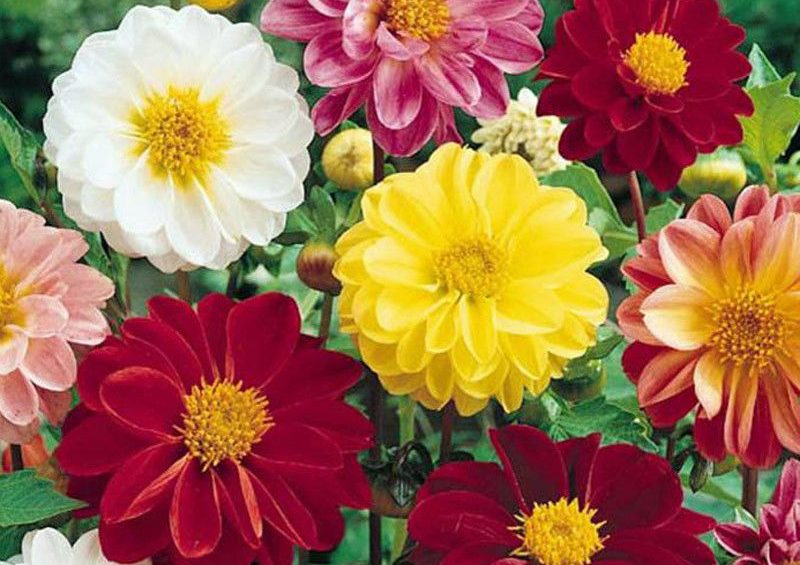


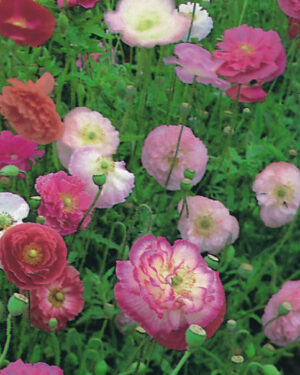

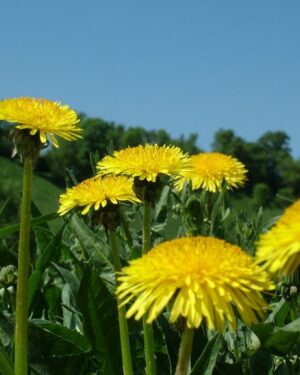
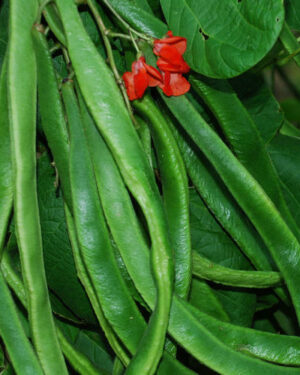
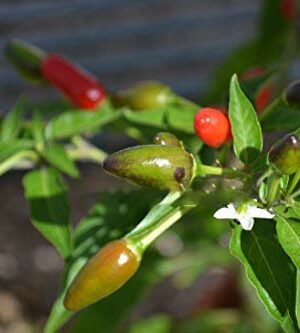
Reviews
There are no reviews yet.